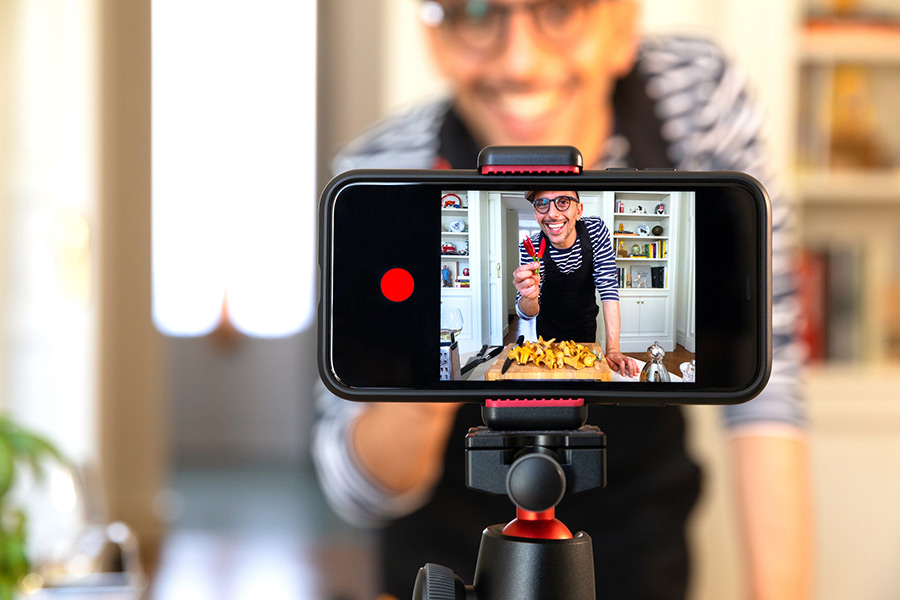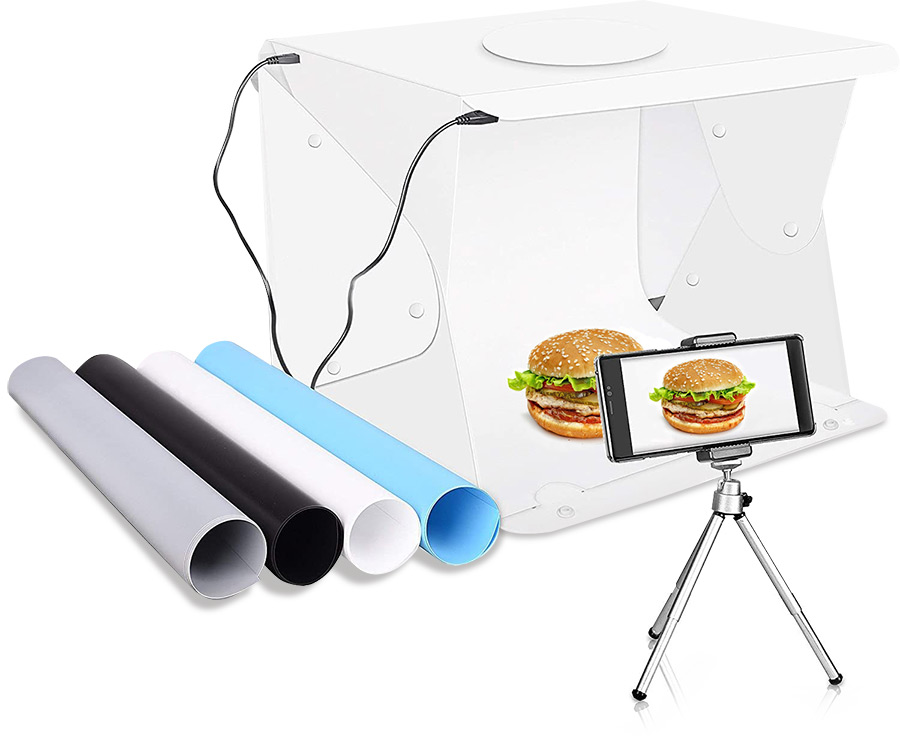Photos and video reign supreme in social media today, so you may be excited to jump into this form of marketing. And, how hard could it be to post mouth-watering pictures or an appetizing video of your signature dishes?
While nice to have, you don’t need a dedicated social media team or professional photographer for success. With a strategy, knowledge of basic principles of photography, and some tools to enhance your smartphone camera pics, you can generate engagement and drive traffic to your establishment.
Strategize for success
It all starts with your brand
Think of your brand as the story you want to tell, visually and with words. First, define the brand you’re promoting: your establishment’s, yours as a chef, or both. Then identify your key message. Is it about local food and sustainability? Family-style ambience? A party vibe, or fine dining? Commentary on food politics?
Your brand is the foundation for each social media marketing decision you make, from the channels you use, what you share, and the mood of your images. Yes, mood, since that’s what you want to create.

Which social channels should you use?
There are many social media channels. Consider which socials work best for food generally and your brand in particular, where your customers hang out, and what fits well with your resources and skills.
Instagram and Facebook are the big players, and many in your community will be there. Consider a presence on one or both. These are tablestakes.
We eat with our eyes first. Instagram is the place to be for images (and increasingly video). It’s ideal for showcasing your food and atmosphere. You can also use a Facebook page to amplify your story in photos and videos. It also provides a robust information directory for details like hours, menus and directions. You can even engage with your community through live video on both platforms.
Try to be where your target demographic is. If you cater to Millennials and Gen Z, consider using the video platform TikTok. While less visual, Twitter can effectively convey your brand and discuss food issues in a newsier format.
Don’t bite off more than you can chew
Social media is surprisingly time-consuming to maintain well. Don’t feel you have to be on all channels or use video if it’s not your thing. It’s better to focus on one or two channels that you’re comfortable with and can use well.
Plan your approach
Make a basic plan for each social media channel you use. Think about:
- How often you want to post — Consistency is more important than frequency.
- Timing — Post that great shot of eggs benny when people are making brunch plans, not at four p.m. on Sunday.
- Varying content across channels — People may follow you on more than one platform. They can tune out if you post the same photo at the same time everywhere. Vary timing, promote different dishes or use different shots of the featured dish.
- Engagement— It’s not all about what you receive from social media. How will you respond to followers who tag your restaurant in photos or leave comments? Your engagement with them is at least as important as what you post.
Synchronize key information
Changing your hours? Update them on any channel where they’re posted. Or, put a link to your Facebook page in your other channel profiles so you only need to update once.

Sharing guidelines
What makes your content uniquely identifiable so followers stop scrolling to check out what you’re up to? Visually, it may be your food styling, the human elements included, the mood of your photos, or curated elements of your personal life. Telling your story cohesively supports your brand identity.
Content wise, if you’re going to share a political or personal post when you’ve only featured food before, ensure your intention supports your brand. A photo of the head chef’s new baby may generate a positive response; a rant about a local political issue may not, unless you’ve established your reputation as a public figure with views that people follow.
Learning for success
Smartphone camera quality has advanced greatly, but you still need to bring some photography savvy and skills to the game. Many online articles and courses are available. Through learning and practice you’ll develop a good eye for what works best for you.
Here are four basic considerations for attention-grabbing images.
- Lighting — Use natural, diffused light or an evenly lit space whenever possible. If lighting is an issue, photograph your dish in an illuminated light box or attach a ring light to your phone (they’re not just for selfies!). Don’t use a flash, which can create harsh contrast and glare.
- Layout — How you compose photos can add emphasis and drama, influencing the viewer’s reaction. Try various styles like the rule of thirds and centring. Be aware of what doesn’t belong — that sexy cocktail doesn’t look as appealing with a bar mop in the background.
- Perspective — Experiment with different angles to see what works best for each dish. Does an overhead shot make that towering salad look flat, while a 45-degree perspective adds drama to a bowl of steaming soup? For video, the popular overhead style may feel instructional when you’re trying to convey the excitement of a dish coming together.
- Editing— It’s always worth taking a few minutes to correct and enhance photos before sharing them. You can adjust shadows and brightness, enhance colour, crop for stylistic effect, and add filters for a cohesive tone. You can use an editing app or the tools built into platforms like Instagram.

Equip for success
Choose among the following basic tools to take your smartphone photos to the next level:
- Tripod (consider overhead capability)
- Light box, available through Brand Points PLUS
- Ring light (standalone or clips onto your phone)
- Light diffuser screens
- Reflectors (as simple as foam board) to bounce light
- Snapseed, a free but powerful editing app for iOS and Android



